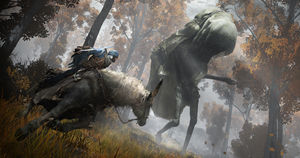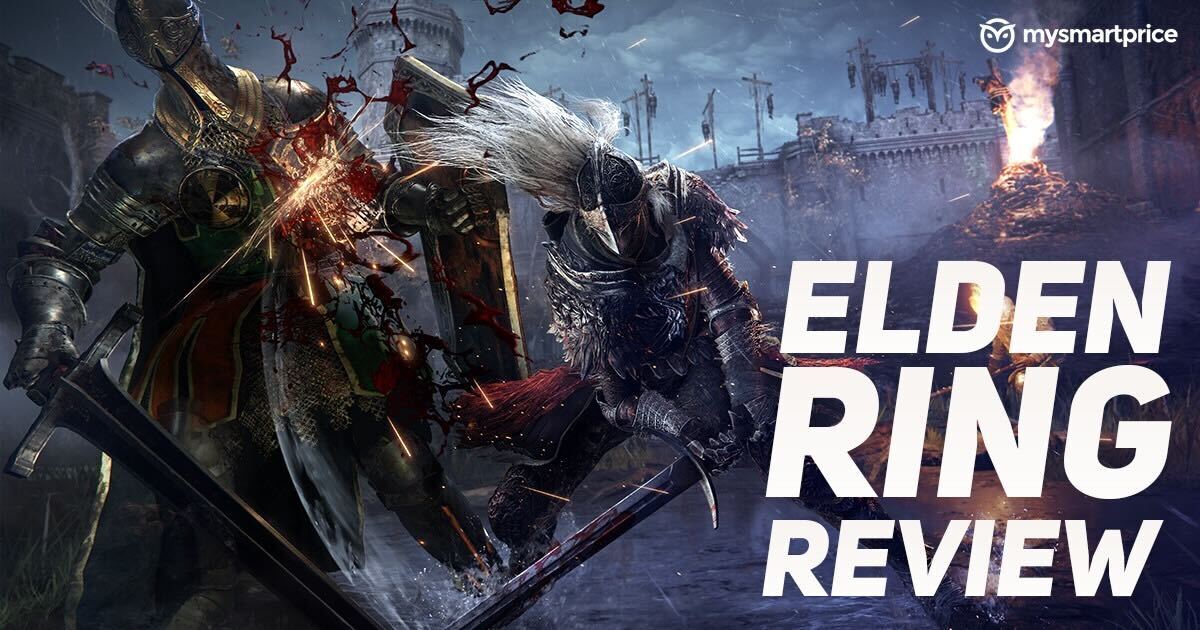
Elden Ring is the latest offering from FromSoftware Games, the trailblazing studio behind some of the most beloved games of the last couple of decades such as Demon’s Souls, Dark Souls, and Bloodborne. There aren’t many studios that have been entrusted with delivering back-to-back stone-cold hits, yet, despite the odds, FromSoftware has done exactly that.
Soon after the launch of Demon’s Souls, it was apparent for a small portion of the gaming community to see that there could be a market for deeply challenging games with a deliberate combat system that rewards skill and patience. It took Dark Souls to truly cement FromSoftware’s excellence and they proved beyond a shadow of a doubt that this was a studio that means business and they weren’t going to be a one-hit-wonder.
In the decade that followed, the studio delivered with each release – Dark Souls 2, Dark Souls 3, Bloodborne, and Sekiro: Shadows Die Twice. Now, riding on Elden Ring is the expectation of excellence, nay perfection. So now that the game is finally here and we’ve gotten to spend a considerable amount of time with it – did FromSoftware deliver or is this the first stumble for a studio that has been consistent unlike any other?
Elden Ring – FromSoftware’s Magnum Opus
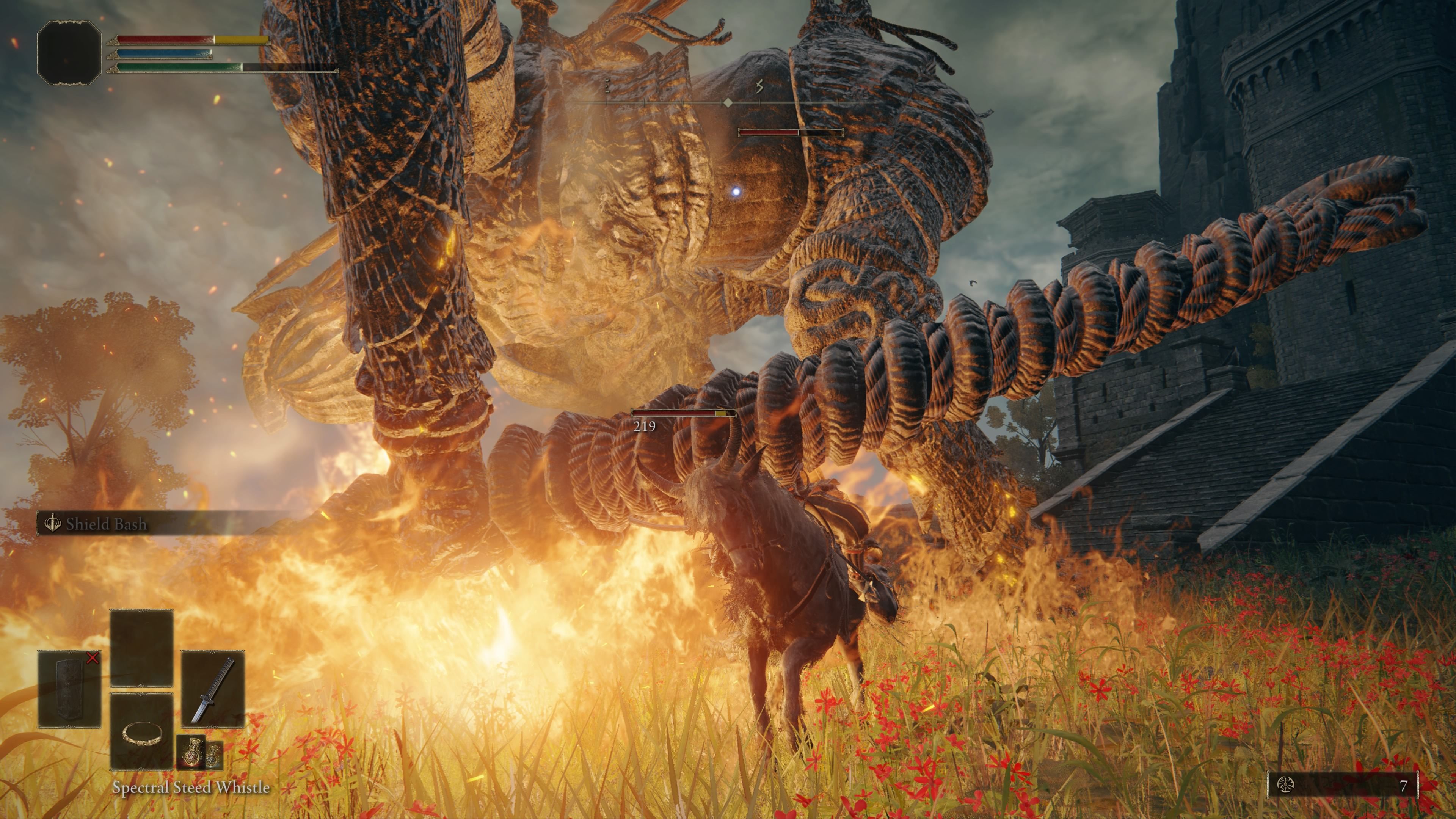
In many ways, Elden Ring is Dark Souls 4, but in other ways, it is also Bloodborne 2, and you might even find hints of Sekiro rolled into it somewhere. For all intents and purposes, Elden Ring is the culmination of the journey the studio has been on to this point and represents each idea explored in each of their games, taken to its extreme. That isn’t to say that the game doesn’t have anything new to offer because it does, and it does so extremely well and generously.
The core structure of Elden Ring is quite similar to the studio’s previous titles – you start off as a Tarnished/The Chosen Undead/The Hunter and are pitted against an unforgiving world populated by either mindless beasts, deformed humans, or some sort of body-horror masterpiece. You are tasked with some powerful quest that has you slaying bosses that seem impossible to defeat at first, but eventually, with enough repetition and learning, you’ll get there and assume sort of power by the end.
Even with the game carrying much in the way of familiarity, Elden Ring is never derivative or stale. It finds new ways to surprise players, hiding away storytelling opportunities in the open world, hidden boss fights that only occur at certain times in the day, or boss fights you might miss entirely if you happen to fly by quickly on your speedy steed.
For newcomers, this might not be the ideal introduction to the soulslike genre as it strips away certain aspects of the challenge of soulslikes to accommodate an open-world setting. However, for players used to this sort of combat and challenge of soulslikes and soulsbornes, Elden Ring is one of the finest games ever made.
The Open-World of Elden Ring

Everyone who has ever played a single FromSoftware game knows what to expect at this point – challenging boss fights, crushing difficulty, deliberate combat, bonfire-type save points, and a severely obtuse narrative. All of those things are indeed present in Elden Ring, and then some. Mostly because everything we’ve loved about FromSoftware titles is there in Elden Ring, but in an open-world setting.
For some, an open world essentially meant that a lot of what makes FromSoft’s games so great, to begin with, was going to be lost. An open-world meant trading in intricate Metroidvania style map design for vast open stretches of nothingness and a checklist-map with players crossing off millions of pointless side quests. Safe to say, Elden Ring doesn’t even come close to running that risk. In fact, the open-world allows a level of affordance and accessibility never seen before in FromSoftware games.
Boss fights are soul-crushingly challenging, still, but in order to adapt to the new open-world setting, there is always a save point nearby, referred to in this game, as a Site of Grace. In a game like Dark Souls or Bloodborne, losing to a boss meant having to wade through scores of enemies in a particular just to be able to win back some of your XP (Runes, in this game) and hopefully, kill the boss.
In Elden Ring, there is more than likely a Site of Grace close to a boss fight, meaning players can repeatedly try taking on the boss as quickly as possible. The turnaround time between each boss fight is helped by the lighting-fast load times of the PS5’s SSD, which is another point of note. The load times themselves was a punishment of sorts in these games, and if you happen to play on a system with an SSD, dying feels a lot more ‘convenient’. Affordances such as this might raise some eyebrows for die-hard soulslike gamers, but it is a solid compromise as the open-world simply cannot have the same design principles as a relatively linear game like Dark Souls or Bloodborne.

On one hand, it does mean Elden Ring is a little more forgiving than previous soulslikes, on the other, it might also mean players still on the fence about trying a game as imposing as this, might give this a go and discover the wonders that a hard-fought boss fight can bring.
The game encourages exploration in a way that a few open-word games can manage. The ‘map’ itself feels quite underwhelming at first, but that is the conceit of this game. The only to find out what lies beyond the fog is to wade through and see for yourself. There is nothing marked on the map for you, meaning, players can engage in ‘exploration’ in its truest form.
While most open-world games will drop a sly ‘?’ or another such marker to encourage exploration, Elden Ring respects the players enough to let them see for themselves what awaits them at certain corners of the map and whether it’s worth taking the risk. This is helped in a major way by Fast Travel and Torrent (your trust steed). Exploration feels like a breeze and discovering new locations and map fragments feels truly gratifying.
However, if die-hard Dark Souls fans end up craving gothic interiors with gorgeous design and legions of monstrous enemies, there are plenty of challenges awaiting them in the forsaken castles and holds of Elden Ring.
Combat and Character Progression

As a Tarnished, you get to pick your class, referred to in this game, as your ‘Origin’. This is similar to previous FromSoft titles, but there are now 10 of them. Each of them will have specializations, they each come with their own unique starting armour and weapons. For instance, Vagabond is a great starter Class with balanced stats across the board and decent weaponry. However, adventurous types might want to play Magic-heavy with a Class that emphasizes Mind and Faith, such as Astrologer.
Another thing of note is the fantastic character creation in the game. In all honesty, Elden Ring has perhaps the most in-depth character customisation in an RPG this side of Dragon Age Inquisition.
One of the game’s biggest positives is the level of class fluidity it offers. Meaning, if players start out with a Samurai origin, but might want to try out Magic, they can dump points into the respective stats and level up in that particular department. This allows for a gameplay experience never quite seen before in soulslikes.
As is to be expected from the studio, the game’s combat is finely tuned and polished to a degree that feels sufficiently challenging and satisfying. Hitboxes seem fair enough and the masterful animation work on the bosses provide enough information for each hit to feel fair and earned, and not a result of wonky video game logic.
There are some new tricks up the game’s sleeve as it borrows from previous titles and gives it its own spin. A shield allows players to parry and get in a critical hit, much in the way Bloodborne allowed players to stagger their enemies with their pistol. A similar counter-attack mechanic from Sekiro is also present in the game for players to absorb a hit through the shield and respond with a giant hit of their own.
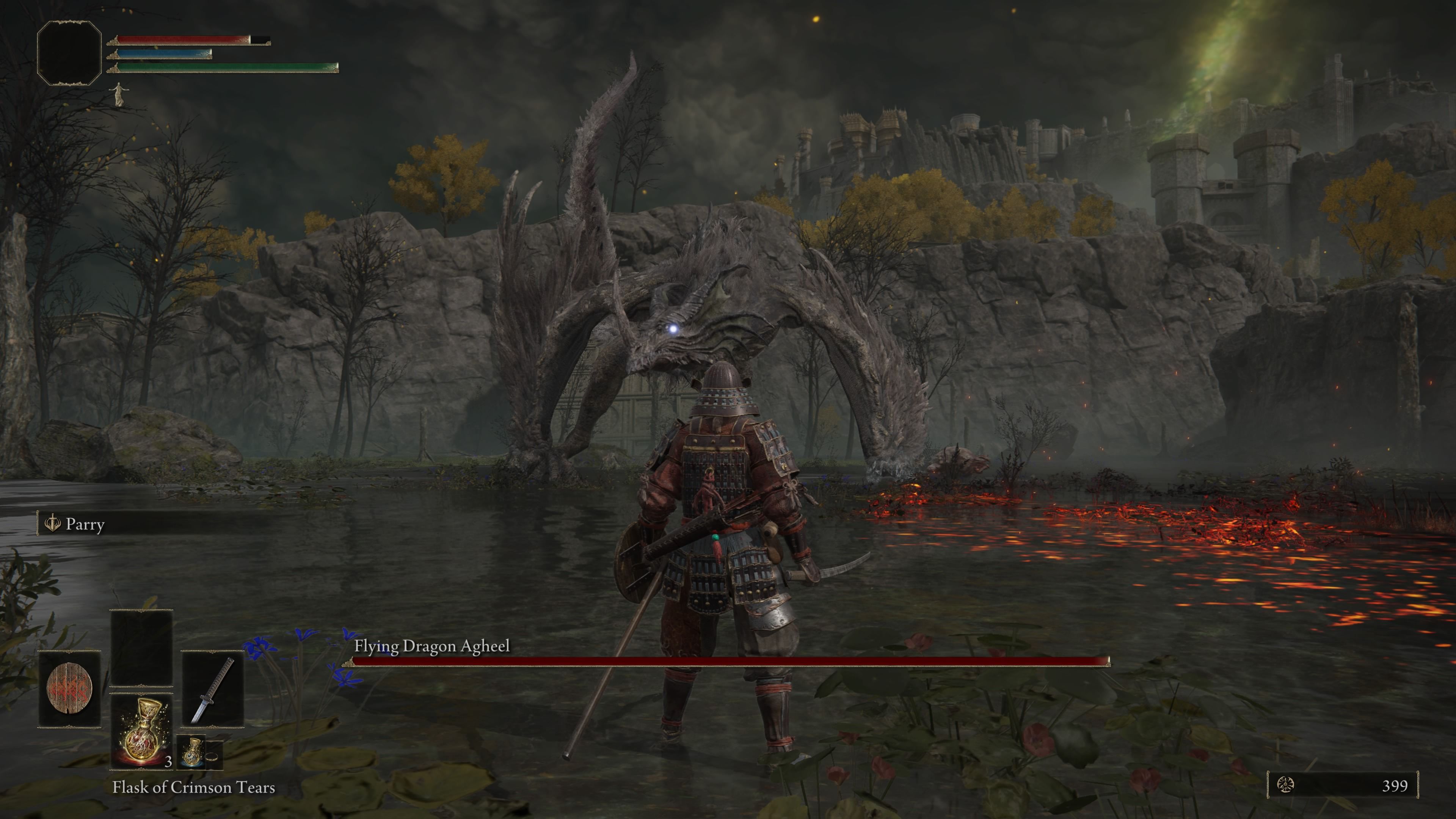
The level of experimentation on offer is doubled by the crouch button, which allows players to introduce a little Sekiro in a typically Dark Souls world. If areas appear too highly populated, players might want to try and stick to tall grass and shadows to sneak up on enemies and hit them with a strong blow, even one-hit kills. This allows players to thin out enemy numbers and increase their chances of success.
The newest trick in the book, however, is the addition of a jump button. Players can now leap to the air and bring down a heavy strike that deals massive stagger damage to enemies. This allows players to find their own ways out of sticky situations and figure out which specific moves the bosses and enemies are susceptible to. There is a good chance that no two players will have the same approach to combat, which feels endemic to the entire game.
If that wasn’t quite enough to sell you on the game, here’s the real kicker – there is a day-night cycle in the game. If you want to gamble with stealth, you might want to try doing it at nighttime, because it’ll be harder for enemies to spot you. This kind of dynamic difficulty is new for soulslikes and a more-than-welcome addition.
Performance and Presentation
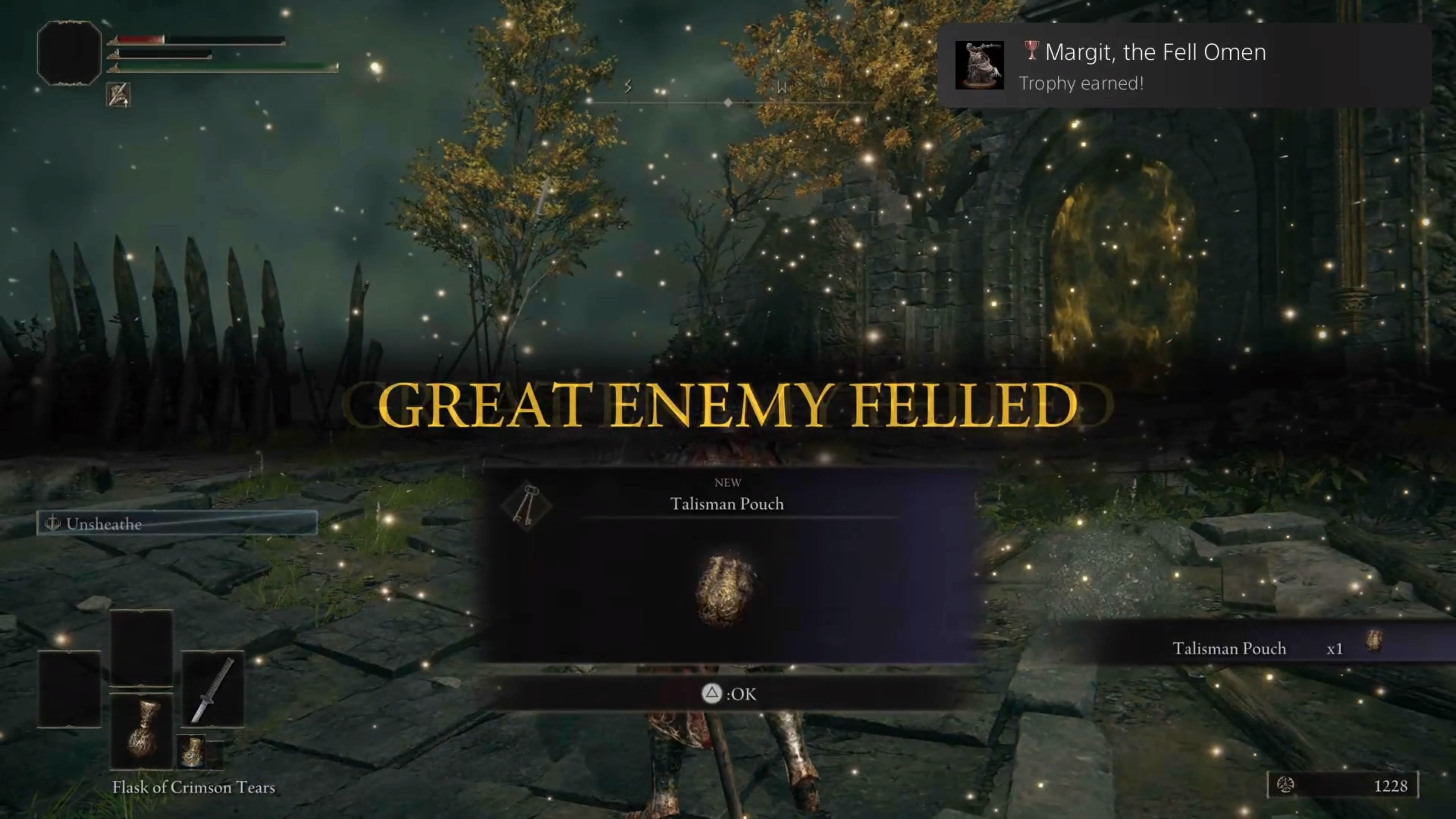
I played the game on a PS5 and it maintained a steady 45-60 FPS in Performance Mode. While reportedly, the PC version of the game seems to suffer occasionally, resulting in frame rate drops, the PS5 version seemed positively stable and I never really encountered a single frame-drop anywhere. The game has two visual modes on next-gen consoles – Performance and Quality.
As the name might suggest, Performance prioritizes frame rate over visual fidelity and resolution and is generally my favourite way of experiencing the game. The challenge of Elden Ring compels you to get as many advantages as you can possibly manage and if a higher frame rate helps you get better at combat, then Performance Mode is really the only way to play.
Regardless of whether you play in Performance Mode or Quality, the game is jaw-droppingly beautiful, positively grotesque in certain places, but beautiful nonetheless. From the stark Weeping Peninsula to lush landscapes in Lingrave, Elden Ring never really fails to impress you with its visuals.
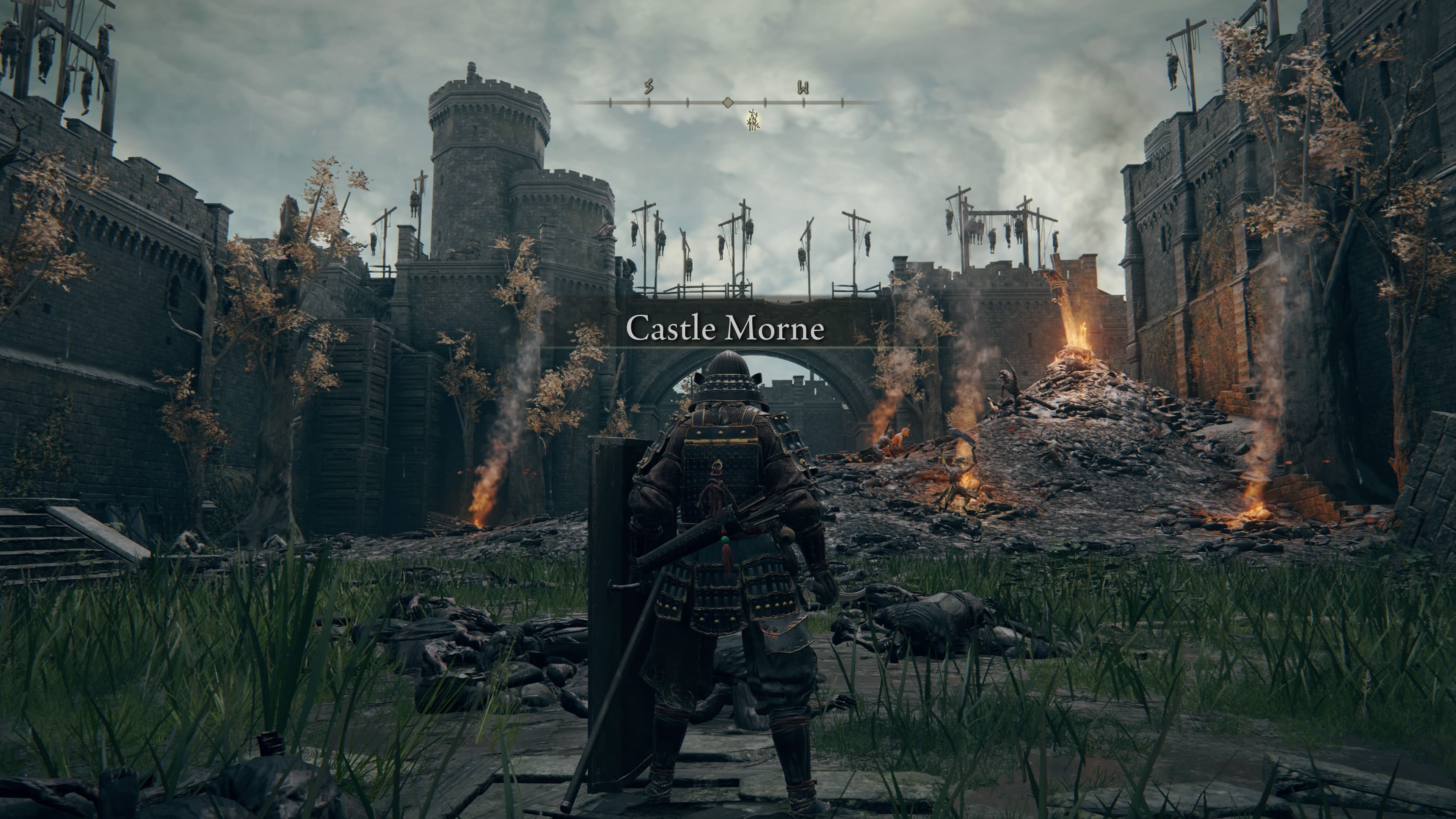
Even at its most body-horror grotesque best, the game is simply a marvel to look at. The only thing I would even suggest the game’s visuals are trumped by is the game’s fantastic audio design and music. Each individual hit by the player, the enemies or the bosses, feels excruciatingly crunchy, which is exactly how players want the game to sound like. The feeling of charging towards a gigantic dragon as the orchestra goes into full power in the back is simply lightning in a bottle.
The audio soundscape designed by FromSoftware Games creates a sensory experience that has only a few parallels. Simply exploring the world will result in the winds carrying sounds of distant howls and screams, guiding the player towards content and exploration opportunity without hitting them over the head with an icon or a forced camera movement.
If you own a PS5 or an Xbox Series X/S and were waiting for a truly next-gen game to take full advantage of it, this might just be it. While the console version seems to have fared nigh perfectly in terms of performance, the PC version seems to have suffered a bit. While a patch is now available, there still seems to be issues involving framerate drops occasionally in the PC version of the game.
Narrative, Lore, and Worldbuilding in Elden Ring
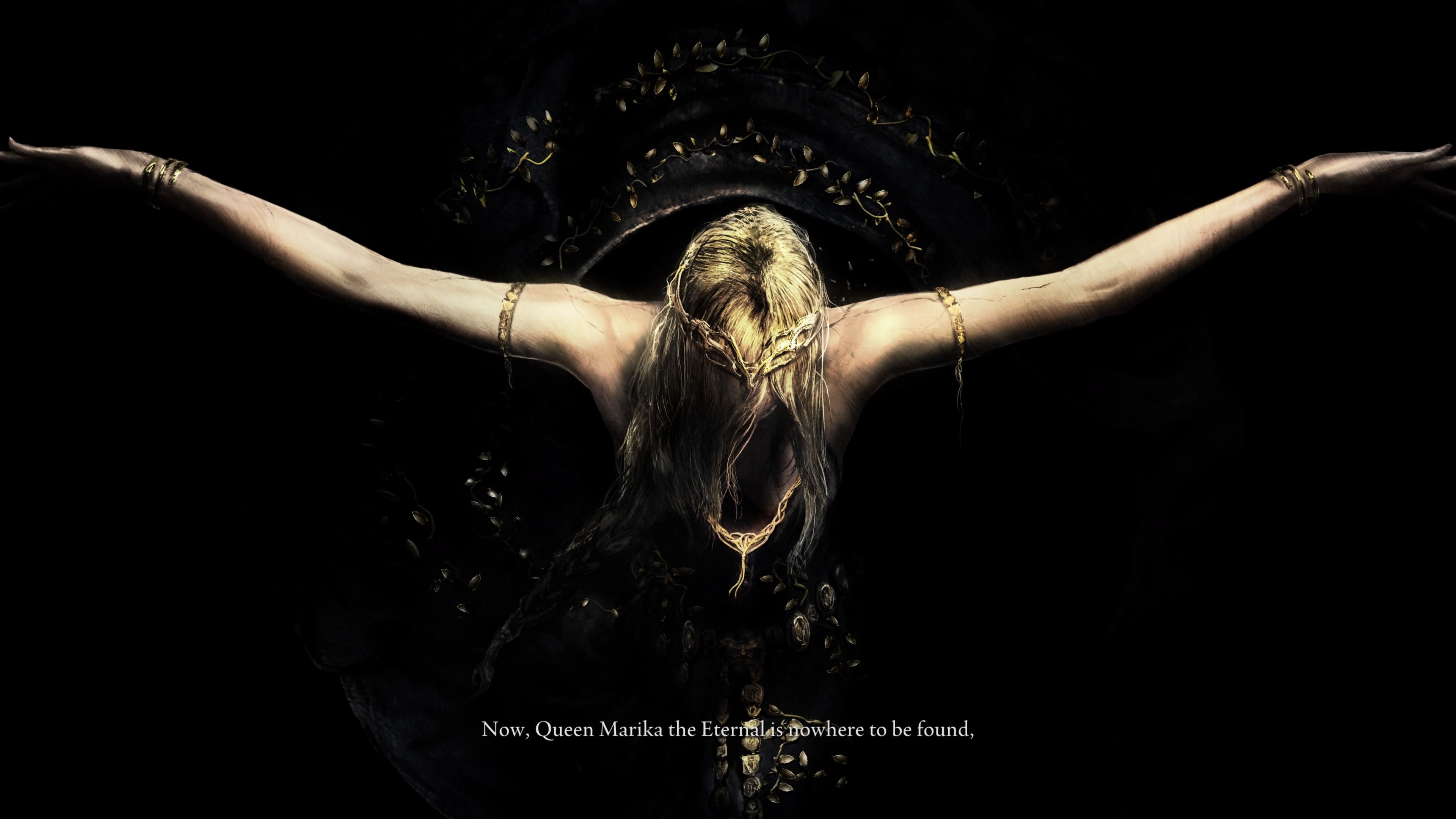
Expecting FromSoftware and Hidetaka Miyazaki to tell a coherent narrative spoon-fed to the player, is like expecting a tiger to not bite when your hand is in its mouth. Much like previous games, there is an extremely rich story full of interesting characters and lore being told, however, it is hidden away in item descriptions, enemy dialogue, and brief cutscenes.
While this might be a little controversial, I tend to side with the camp that FromSoft titles don’t do a great job at storytelling. Mostly because it involves players looking up 30-minute videos on Youtube of VaatiVidya doing a detailed breakdown of 4 item descriptions and a throwaway dialogue to piece together a story.
Yet, this time around, it was easier to get wrapped up in the world of EldenRing and the story it is trying not to tell easily. The opening cutscene bombards you with words you’re not quite sure what to make of, featuring characters you might not even recognise later on, but there is a semblance of a narrative. Different from previous games in the series, Elden Ring’s world isn’t populated by just mindless beats and all manner of deformities, but also characters motivated by emotions, striving to complete quests, or fight over land.

This is easily one of the richest worlds created by the studio, rife with all sorts of political intrigue, emotional questlines, and even discernable factions fighting for power, albeit in a very Miyazaki way. If that sounds a lot like Game of Thrones, it’s because FromSoftware called on George R.R Martin himself to help create this world with Hidetaka Miyazaki. The result is a game world that is full of interesting storytelling opportunities and populated by characters with solid personalities and clear motivations.
In the open world, players might stumble upon characters who might give the player quests or even ask them to side with their faction. Upon conferencing with my gamer friends, I learnt siding with certain characters might not be as rewarding as siding with other characters. This is exactly the kind of stuff that makes this game stand out from the rest of FromSoftware’s catalogue of excellence.
Final Score – Elden Ring

The open-world genre may not have initially appeared to be a great fit for FromSoftware’s excellent, contained, challenging experiences, but yet again, the studio manages to prove exactly why they occupy rarified air in the games industry. Elden Ring manages to do more by doing less by focusing on a few select features and polishing them to their most extreme version.
It chooses not to cram its open world with pointless content that doesn’t lead anywhere – every single aspect of the game feels finely tuned and there is virtually no fat to be seen anywhere in the game. At the same time, the sheer expanse of the game is truly mind-blowing.
Despite being laser-focused and finely-tuned to the most extreme degree, the scope of Elden Ring never ceases to amaze. Seeing the map expand beyond the map you initially thought was the entire map is something players must see for themselves. The size of the world compounded with the opportunity for experimentation creates a sense of wonder that few games are able to.
While I believe the game to be a true modern masterpiece and one of the best games ever made, it continues a certain legacy that I wish FromSoftware would address. These games are known for their crushing difficulty and challenge and it is part of what makes them so great, however, a sizeable portion of the gaming community is not able to experience these wonderful games for precisely that reason.
FromSoftware titles, including Elden Ring, does not have enough accessibility options for disabled gamers to be able to experience the game. Major AAA titles such as The Last of Us Part II recently showcased a truly massive number of accessibility options for players and the kind of reaction it evoked from the disabled gaming community at large should ideally encourage more studios to perhaps work harder in that department. While admittedly, Elden Ring has certain options such as the ability to change key bindings and certain design concessions, it isn’t quite there yet in terms of being truly accessible.
Review copy provided by Bandai Namco and reviewed on a PS5.



